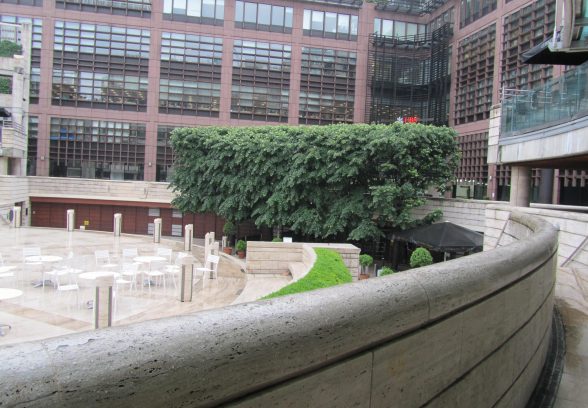This website uses cookies
This website uses cookies to enable it to function properly and to analyse how the website is used. Please click 'Close' to accept and continue using the website.



The Culture Secretary has shunned English Heritage’s advice and granted a certificate of immunity from listing (COI) for the parts of Phase 1-4 of the Broadgate development in the City of London which remain standing. Buildings 4 and 6 were demolished in 2012 to make way for a new building by MAKE.
The Twentieth Century Society continues to see the remaining part of Broadgate as architecturally one of the most significant commercial developments in London of the post-war period. It is a triumph of twentieth century urbanism that deserves to be listed.
The COI applies to Broadgate Square (the current location of the skating rink) and the buildings designed by Peter Foggo of Arup Associates that surround it. We are disappointed by this short sighted decision that opens the door to the loss of more of the city of London’s most important twentieth century architecture.
This latest decision from the Secretary of State flies in the face of her own heritage advisers’ recommendation. Following the decision by the previous Secretary of State last year not to list Broadgate (despite a strong recommendation to do so) it comes as no surprise.
Before the demolition of buildings 4 and 6, English Heritage rated Phase 1-4 as worthy of listing at Grade II*. Following the loss of this important component, they have revised their assessment and now say that the remaining buildings no longer meet the criteria for grade II *, but are still of “clear special architectural and historic interest” and that a COI should not be granted. In their view the complex would be a candidate for designation at grade II, when it reaches 30 years of age in July 2015. Buildings under 30 years of age are normally only be listed if they are under threat and of outstanding quality – Grade II* and above.
This case demonstrates just how vulnerable our recent heritage is, and how the loss of part of a complex of buildings can have a significant impact on a much larger area.

Become a C20 member today and help save our modern design heritage.